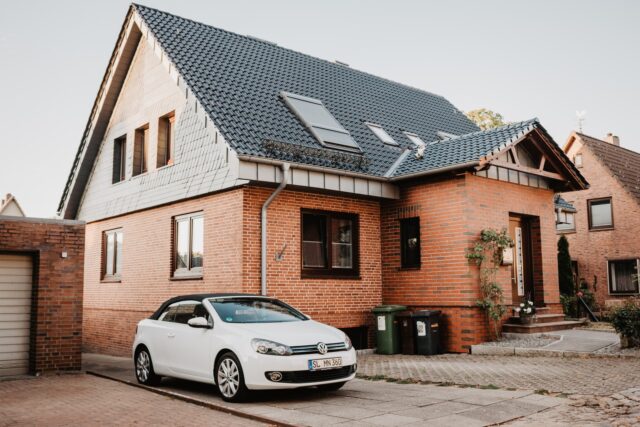
As a Florida homeowner, managing your home and being sure it remains up to code at all times is amongst your most important responsibilities. Akin to most life investments, all properties necessitate maintenance as years pass to bring maximum comfort and security. The longer you have lived in your home, the more likely you have mulled over investing in a new roof installation. However, before jumping to the decision to get a new roof, there are a few obvious signs to look for to figure out whether or not the time is good for you and your house.
Right off the bat, on your undertaking to figure out roofing, you’ve probably come across the ”20” year rule for the longevity of most roofs. That number is utilized as a benchmark. Most residential roofs need replacing during that timeframe. However, there are many variables to consider, and not any roof is the same.
Your roof takes a lot of external wear and tear throughout each passing year. Sunlight, powerful winds, flying trees, rodents, hurricanes, large sums of rain, or dangerous weather conditions – all of these have an impact on a roof’s lifetime.
How quickly your roof needs to be replaced depends on many factors:
- Weather.
- Yearly maintenance and preservation.
- Age of the materials.
- How good the materials used are.
- How well it was installed in the first place.
- Were repairs addressed when needed?
- If wildlife was kept away.
- External debris accumulation.
Your Roof Is Over 20 Years Old
Usually, an asphalt shingle roof lasts about 12 to 15 years. Metal or tile roofs tend to have a much longer lifespan. If your roof is approaching its typical replacement age, you should probably start thinking about a roof replacement. In addition, if previous roof repairs were installed over the top of your pre-existing roof – a practice referred to as overlaying – you should think about getting a new roof. Overlaying is a quick fix that can mask larger roofing issues beneath the shingle surface.
Begin By Inspecting Your Roof From the Inside Out
The first and easiest way to gauge your roof’s condition is to grab a flashlight and head up to your attic. Make sure you grab a flashlight with a powerful beam, so you don’t miss any damage, and always be sure to be safe as you go through these types of inspections.
Upon arriving in your attic, try to identify one or more of these 4 signs that you need a new roof:
1) Sunlight Shining In Through The Roof
Prior to turning your flashlight on, see if you can locate any rays of sunlight coming through breaks or punctures in your roof. If you do spot any light coming through your roof, fix it or replace your roof immediately. If light is shining through your roof, then water is getting through your roof.
2) Dark Streaks & Stains
This one is also extremely easy to find. If you see dark stains or dark streaks on the underside of your roof or running down the walls from the base of your roof, then your roof is probably leaking, and moisture is deteriorating both your roof, as well as your home’s interior structure.
3) Sagging Areas
In the same way that water will make a piece of cardboard soggy and weak, water can also make the structure of your roof begin to sag. If you uncover sagging sections of your roof, use your hand or a stick to lightly poke at the sagging spot. If the spot feels soft and wet or moves around easily with a touch of your stick, you know you have moisture damage.
4) Water Damage
In addition to checking for dark streaks and sagging areas, be sure to check for any obvious indications of water leaking or rotting your roof on the inside. If you spot any clear signs of water damage, it would be wise to call a roofer to evaluate your roof immediately.
Missing, Loose, Or Cracked Shingles
Inspecting your roof’s shingles is another recommendation to figure out whether or not your roof needs additional attention or a replacement entirely. While checking out the outdoor shingles of your home’s roof, try to find any cracks, misshapen shingles, or shingles that have warped or angled upwards.
Shingles that are curled, cracked, or misshapen may necessitate a further inspection to determine whether or not they can be replaced one by one or if the wiser choice is investing in an entirely new roof.
Locating shingle granules on your roof or building up in your gutter can also signify that it is time for a complete and thorough roof replacement. Large amounts of asphalt granule loss is a big sign that the roof’s condition isn’t where it should be to ensure maximum strength and insulation for your home.
Excessive Growths On Your Roof
Dark spots (or generally dirty-looking shingles) are caused by fungus and algae growth. These may not be directly tied to how often you need to replace your roof (or get it repaired), but these problems can spread and cause damage.
Noticing moss or other types of natural growth on top or out of your roof? Don’t panic. Our natural environment has a tendency to grow over any structure in its path if it is not properly tended to and maintained.
When looking over your roof and the algae you have noticed, make sure to do so by inspecting both the inside and outside of your roof. While the majority of algae growths are likely to be noticed from the outside of your roof, when there’s a bigger problem on deck, nature could also be showing up on its own inside the attic without your knowledge.
In most scenarios, eliminating natural growths from a roof is a way to rapidly fix the problem without even having to consider a re-roof. However, if you see substantial growths on your roof or even inside your home, it is highly advisable to call a professional to determine the root cause and reason for the growth.
When a roof has been covered in natural growths, you may need to replace the roof in its entirety to stop the process in its tracks.
The good news is that algae growth and buildup are not typically indicators that you need to fix or replace your roof. Rather, algae are moreso an eyesore to your roof and one that is quite common in hot places like Southern Florida.
If your roof needs a full roof replacement, there then becomes a number of decisions to be made. Beginning with the roofing material to use, will you stick with asphalt or consider metal? Which Miami Gardens roofing company to work with? If, by chance, there’s a valid insurance claim. Many homeowners having liquid cash to get a new roof may not be viable. There are financing options available for qualified homeowners offered by many roofing companies. Be sure to do due diligence before making any final decisions.
